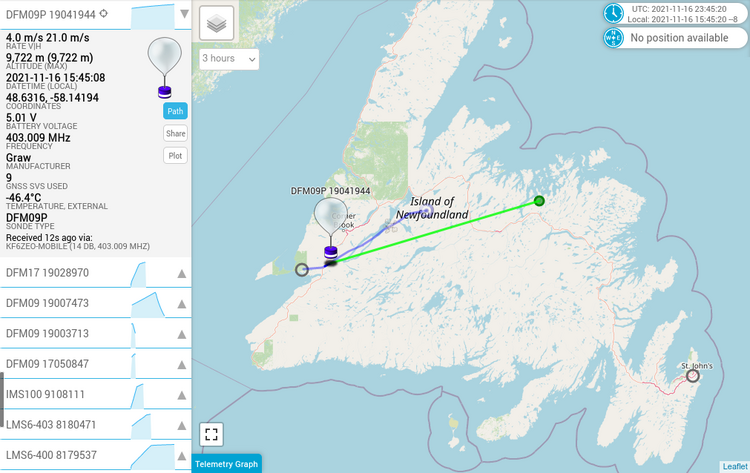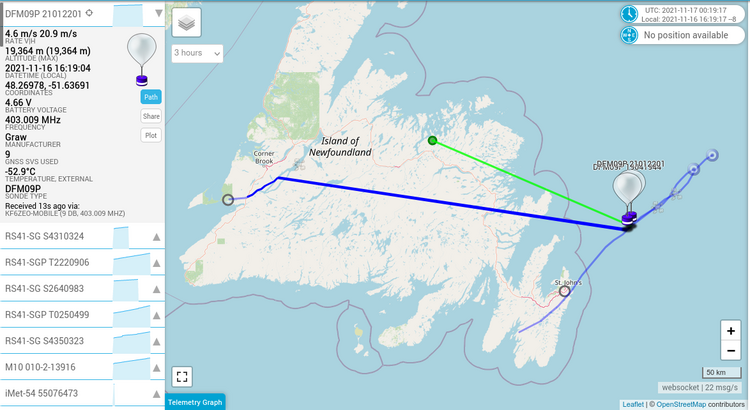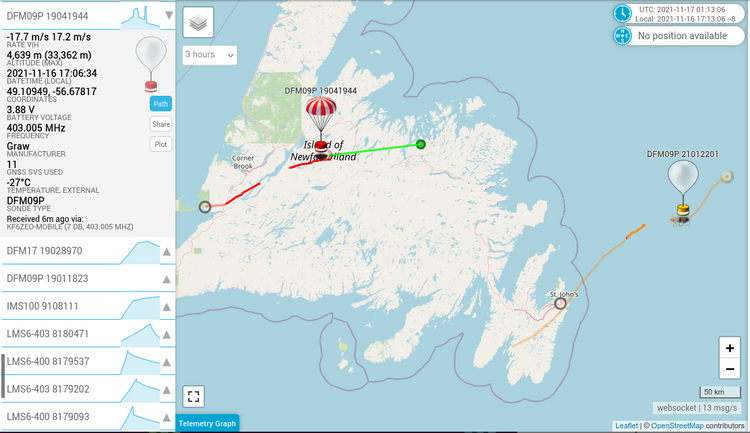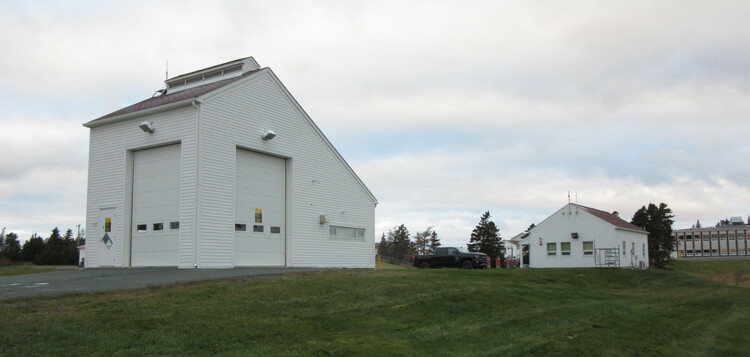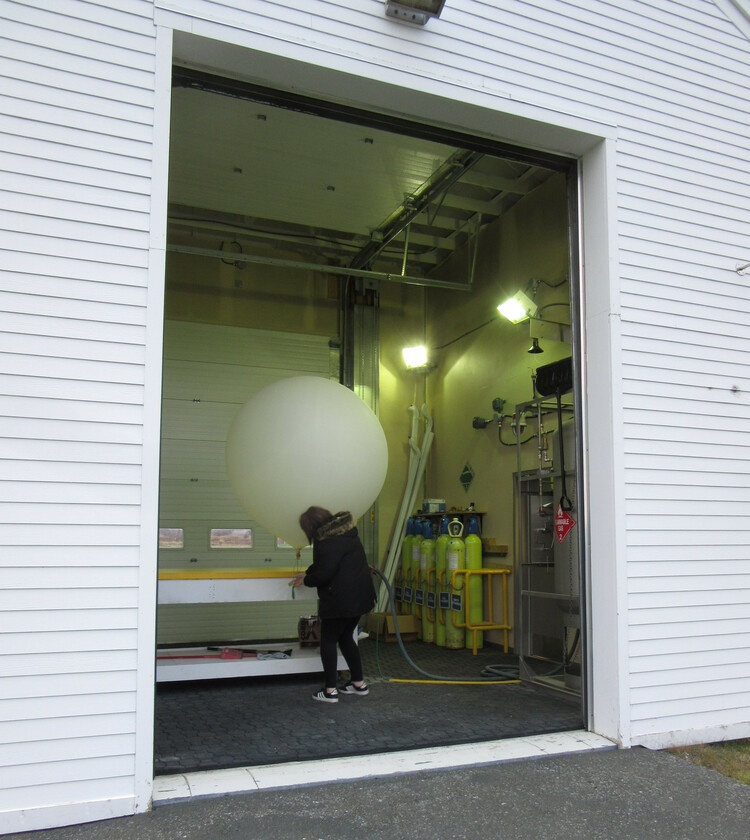I recently went on a work trip to Newfoundland, Canada. Checking Sondehub before I left, I saw that there were two radiosonde launching stations on the Island of Newfoundland, one on the west side in Stephenville, and the other on the far east end in St. John's. And as luck would have it, I was traveling to Lewisporte, which is on the Trans-Canada highway almost halfway between the two launching sites. I might be able to receive both sondes at the same time!
As far as I could tell, the radiosondes launched at both of these sites were Graw DFM-09P (pdf), which transmit around 403 MHz. One interesting thing about these radiosondes is that they don't transmit a serial number with every packet, so it takes a while to determine the serial number of the radiosonde you are receiving.
Receive Station
Since I was traveling, I needed a portable station with two receivers. This is very similar to my standard radiosonde receive station at home, and I didn't use a preamp or filter.
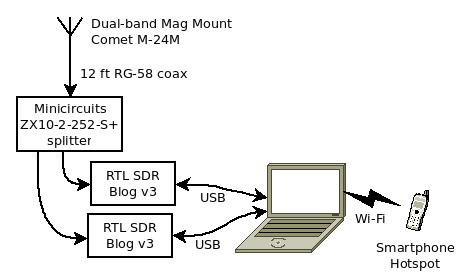
The Comet M-24M dual-band amateur radio antenna works OK at 403 MHz. To split the signal for both receivers, I used a Minicircuits ZX10-2-252-S+ instead of my usual ZN2PD2-63-S+ because it's much smaller. I probably could have just used a SMA Tee, who cares about the impedance mismatch for receiving.
On the software side, I used the docker version of radiosonde_auto_rx. The docker container is much easier to install and update, and prevents your host operating system from accumulating cruft. I highly encourage using the docker container.
2021 Nov 17, 0000Z launch
On my last evening in Lewisporte, I drove to a nearby hilltop where I had good visibility to both launch sites. Since both launch sites were approximately 260 km away, I didn't expect to start receiving the radiosondes until they rose ~5,000 meters into the atmosphere, when there was line-of-sight between the ground station and radiosonde. I was a bit late getting into position, so as soon as I turned on my station I started receiving radiosonde 19041944, launched from Stephenville on the west end of the island.
I received this radiosonde for about 30 minutes, as it rose until 18,000 meters. But then the Stephenville radiosonde was transported across the island, and I started receiving the radiosonde from St. John's. What was going on here?
As it turns out, both balloons were on the same frequency! Due to the FM capture effect, only the stronger signal was being demodulated by the receiver. The stronger signal was switching between both sondes, depending on several factors such as sonde antenna orientation, trees around my receiver, etc. The frequency I recorded for both radiosondes was 403.009 MHz, although these Graw DFM-09P radiosondes are know to have crappy crystal oscillators that drift like crazy, so the programmed frequency is probably 403.010 MHz.
Both radiosondes transmitting on the same frequency is not a problem during normal operations. The official Graw receivers located at the Stephenville and St. John's launch sites are far enough apart, about 450 km, that it's highly unlikely that they will receive the other balloon.
Between both sondes transmitting on the same frequency, and sonde serial numbers only being transmitted occasionally, radiosonde_auto_rx was getting very confused. When it started receiving the other balloon, it assumed the serial number was the same and moved the sonde across the island. This happened a few times.
Cleaning this map up a bit with my awesome photoshop skillz, here's a more clear version of what I received that evening.
So in the end, I didn't need two RTL SDR dongles, so I reconfigured my station for a single receiver.
2021 Nov 18, 0000Z launch
Since I was leaving the island the next day, I spent the night at a hotel next to the airport, and suck my radiosonde antenna in the window. A very standard launch, except it seemed to be launched at 2315 UTC for the 0000Z flight, not the usual 2300 UTC.
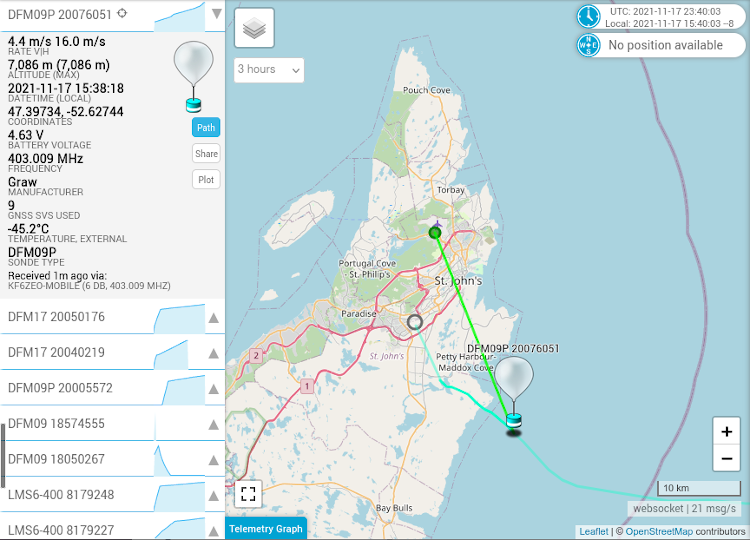
As an aside, did you know that the Island of Newfoundland has its own time zone, which is 30 minutes different than standard time zones? WTF? The island spans 53 to 60 degrees West longitude, which would put it squarely in the UTC-4 hour Atlantic standard time zone. But because of this 30 min difference from the rest of the world, sondes are launched at 7:45 am/pm local time.
2021 Nov 18, 1200Z launch
I decided to head to the launch site the next day to see the morning launch. Just like in Inuvik, the radiosondes in St. John's are launched by hand. The building on the right is an office with the receiving equipment, and you can barely see the GPS and omnidirectional 403 MHz antenna on the roof. The building on the left (with two big roll-up doors) is where the hydrogen gas is generated, and the balloons are inflated before release.
Andrea was conducting the launch this morning. She was nice enough to show me the Graw DFM-09P radiosondes that are launched from this location, and answer all of my questions. The silver part in the upper left is the temperature and humidity sensor, and the thin wire on the right side is the 403 MHz antenna. I'm not sure what the green balloon attached to the cable spool is for. There is no parachute.
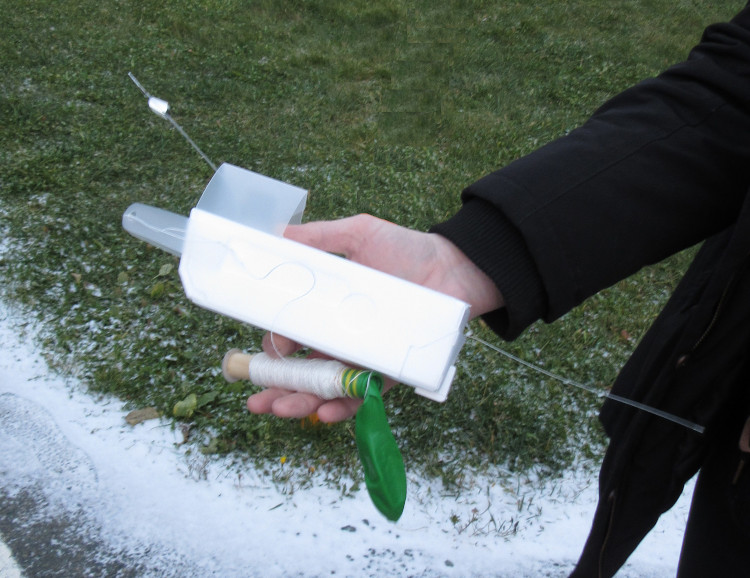
The balloon is inflated with hydrogen gas, generated onsite. After the balloon was inflated, the radiosonde is tied to the balloon.
At 1115 UTC (7:45am local time) the radiosonde was released and headed east.

As with most of the radiosondes launched from St. John's, this one went straight east. Max altitude was 31,382 meters, about 130,000 feet, and it landed about 135 km from the launch site in the Atlantic ocean.
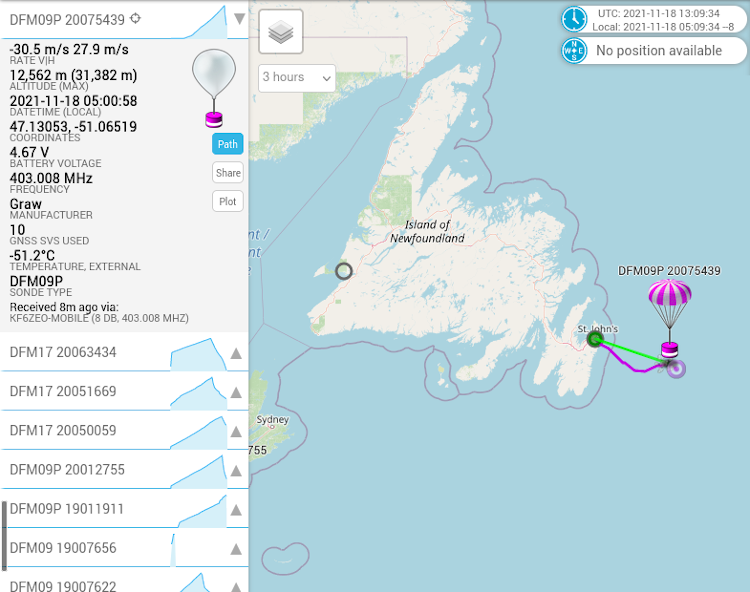
Special thanks to Andrea for answering my numerous questions and letting me watch the launch.
